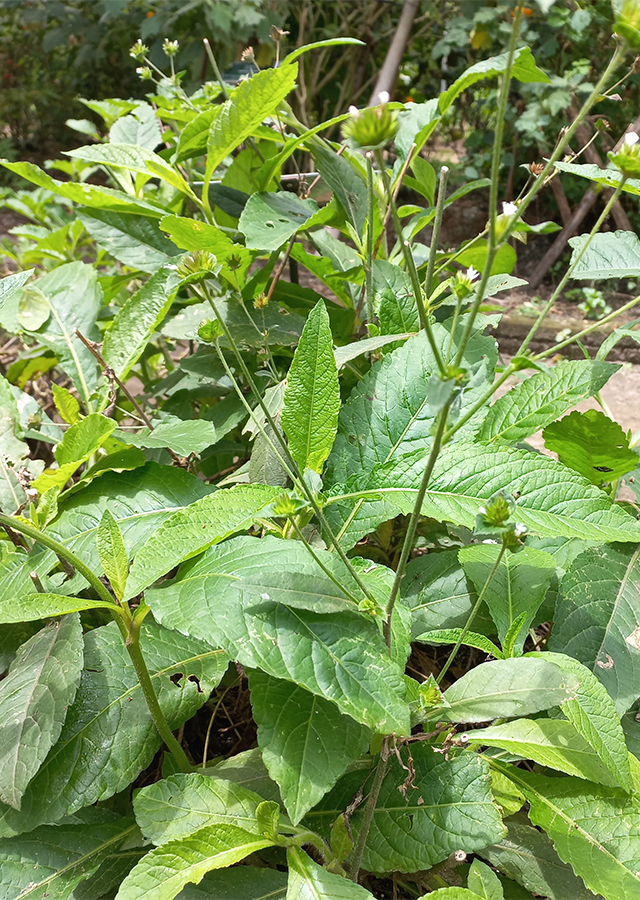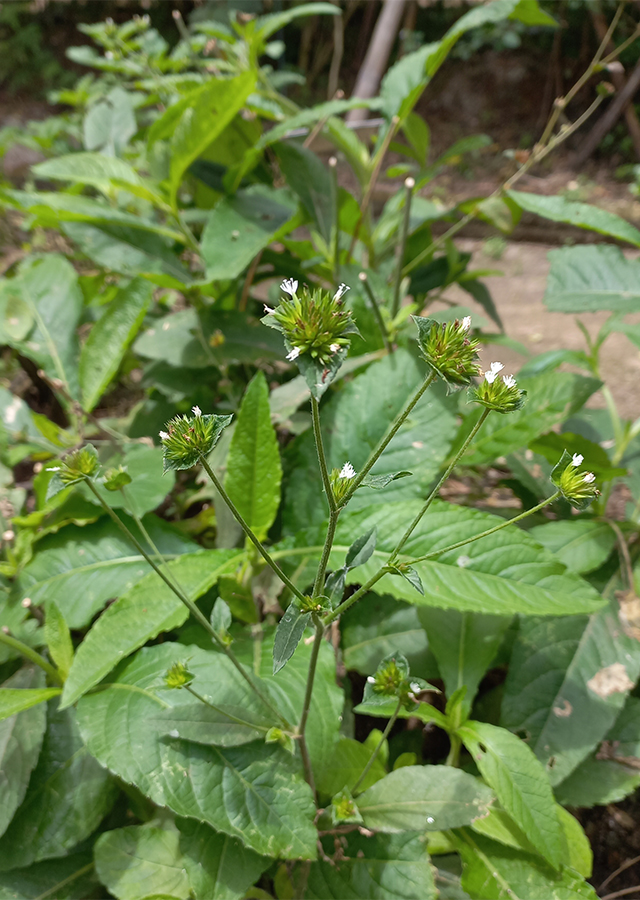Traditional Herbs from Elephantopus mollis
heal_wounds
- Prepare tapak liman leaves\u00a0then wash them until clean.
- crush the leaves until they become a paste then add oil.
- rub on the wound.
fever
- Wash the tapak liman leaves until clean.
- Boil until boiling.
- Wait to cool, then strain.
- Drink.
What is Elephantopus mollis Looks like??



Parts of Elephantopus mollis that could be used
- Leaves
- All Parts of the Plant
Elephantopus mollis Distribution
White palm tapak is native to Central and South America, from Argentina to Mexico, including the Caribbean, but has spread very widely to Africa, East Asia, and the Pacific, where it has become an invasive weed in pastures and plantations in many countries. However, this plant, which is considered an invasive weed, actually has health benefits as a traditional medicine. In Brazil the leaves are used to treat various diseases, including bronchitis, coughs and influenza. In Burma, this plant is also traditionally used to treat irregular menstruation. Apart from being a traditional medicine, in China, this plant has also been reported to be eaten as a salad.Agroecology of Elephantopus mollis
White lime tapak can be found growing in open places in grasslands, plantations, forest edges, roadsides, and disturbed or swampy areas, at an altitude of up to 2,000 m above sea level. This plant likes areas with high rainfall, fertile, humid tropical conditions, and requires full sunlight for optimal growth. And supported by fertile soil conditions, but can tolerate less fertile soil.
Morphology of Elephantopus mollis
- Fibrous roots.
- Stems are mostly solitary, unbranched except for the inflorescence, striated, hairy.
- Leaves scattered along the stem, single, ovate to lanceolate, pointed at both ends, blunt-toothed to serrated margins, Leaf veins are pinnate, green. The surface of the leaves is smooth. The lower surface is mottled with glands and leaf stalks are concentrated at the base.
- Flowers have a white or purple corolla, consisting of a slender tube and legs short, deeply lobed, glabrous (not hairy), with a deep slit on one side. Surrounded by 3 leaf-like stems about 1 cm long, ovate to oval and heart-shaped at the base. each head usually bears 4 fruit.
- The fruit is long, cylindrical, narrow, ribbed, papus consists of 5 elements, short like scales at the base and suddenly tapering to length.
- Seeds are black, densely covered with hairs. short smooth, at the top consists of 5 white hairs 3-4.5 mm long.
Cultivation of Elephantopus mollis
Propagation is done generatively using seeds.
Elephantopus mollis, more details :
Chemical Content of Elephantopus mollisSesquiterpene lactone, deoxyelephantopin, caffeic acid, dicaffeoylquinic acid, dihydroxy-cinamic acid methyl ester, molephantin, molephantinin, 2-de-ethoxy-2-hydroxyphantomolin, 2-de-ethoxy-2-methoxyphantomolin, stigmasterol, α-amyrin fatty acid esters and lupeol fatty acid esters, epifriedelinol.
Benefits of Elephantopus mollis
Treats bronchitis, coughs and influenza, reduces fever, treats itching, treats wounds, treats irregular menstruation, hemorrhoids, fatigue and arthritis, helps heal broken bones, leishmaniasis (a disease caused by Leishmania parasite infection), dysentery, bruises, feet Elephant, is emollient (moisturizes and softens the skin), hemostasis (stops bleeding), diaphoretic (produces sweat), antioxidant, diuretic (urine laxative).
Simplisia of Elephantopus mollis
Another Facts for Elephantopus mollis :
Synonym of Elephantopus mollisElephantopus carolinensis G.Mey., Elephantopus serratus Blanco, Elephantopus cernuus Vall.
Habitus of Elephantopus mollis
Herb. Annual herb, reaches 1 m in height
Habitat of Elephantopus mollis
- Wetland", "Forest", "Roadside", "Shrub Area", "Grassland", "Land
No comments:
Post a Comment